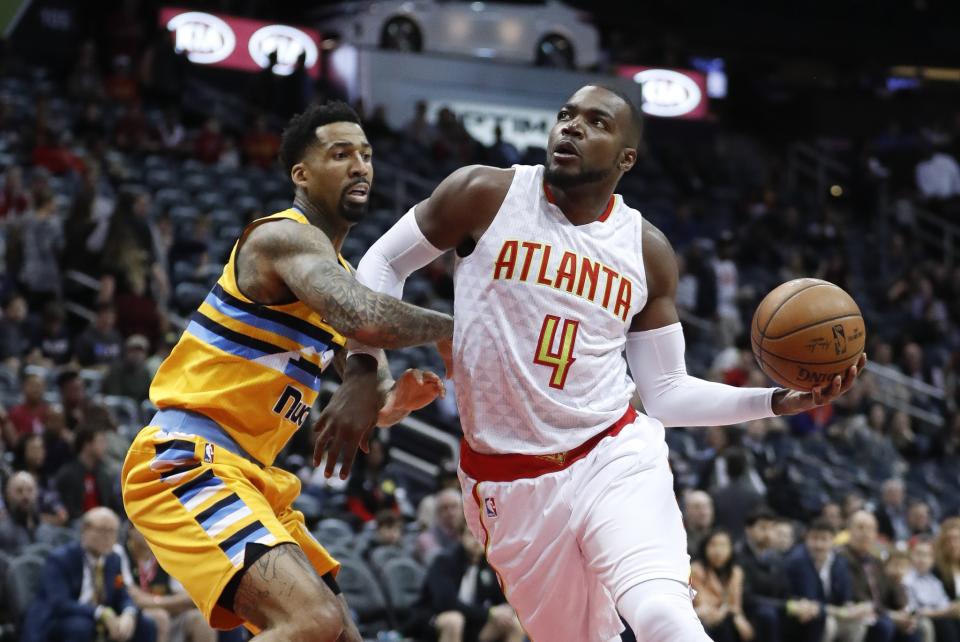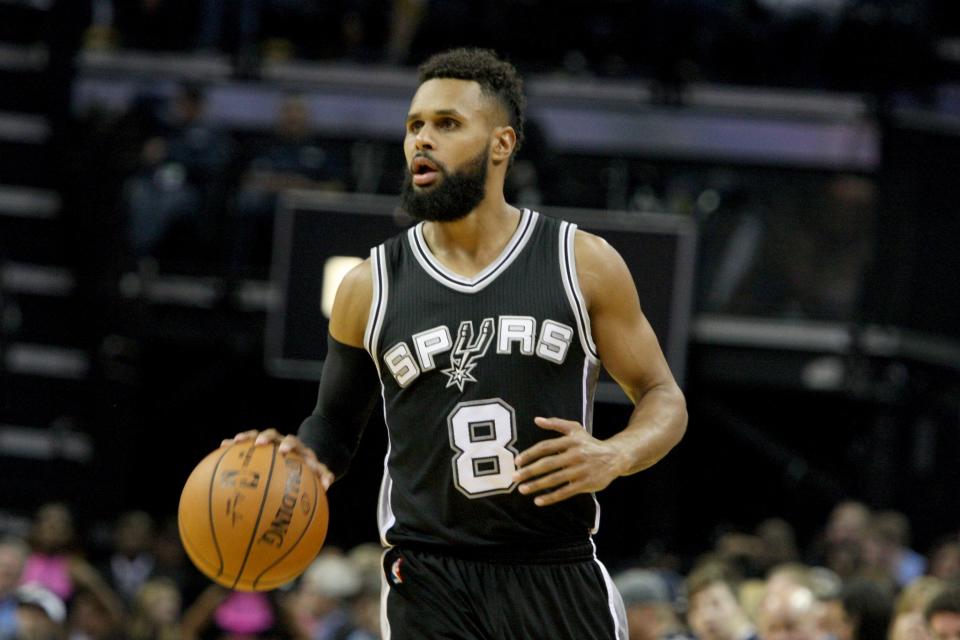Meet The Vertical's Jerome James All-Stars
In the summer of 2005, an intriguing name hit the free-agent market: Jerome James, a 29-year-old, seven-foot center who had spent the last four seasons with Seattle. His years with the Sonics were unimpressive; he never averaged more than six points per game and was a woeful rebounder. However, in the first round of the ’05 playoffs, James submitted a career-defining performance, averaging 17 points, nine rebounds and two blocks in Seattle’s first-round series win.
Months later the Knicks, clearly dazzled by a five-game sample, swooped in and handed James a five-year, $29 million contract.
James played in 90 games over four seasons in New York, never cracking more than three points per game. In 2009, he was traded to the Bulls. He never played again.
James’s failure underscores the difficulty in player evaluation. Contract years can be misleading. The type of systems in which a player can succeed must be considered. Age, health and declining skills must be accounted for. A cap-gobbling bad contract can hang around a team’s neck for years; even a smaller one can limit cap flexibility.
With that in mind, we unveil the Jerome James All-Stars. Each player on this list can hit free agency this summer, and each carries varying degrees of risk. Our analysis is below, with The Vertical’s Bobby Marks providing what he sees as likely contract offers.
STARTERS
Derrick Rose
Look, Rose’s season in New York was sabotaged before it started; his civil sexual-assault trial gobbled up most of training camp, and he will have to answer to teams about his bizarre AWOL incident in January. But several executives say they still see a redeemable player. Rose will likely play 70-plus games for the first time since 2010-11, and his shooting percentage (46.7 percent) is the highest since his second season. Teams will be wary about the number of years to offer, but don’t be surprised to see a big per-year number on a shorter-term deal.
The next contract: Two years, $30 million.
With the top of the free-agent class (Chris Paul, Steph Curry, Kyle Lowry, Jeff Teague, George Hill and possibly Jrue Holiday) likely to remain with their teams, Rose’s choices could come down to rebuilding teams such as Philadelphia, Sacramento, New Orleans (if the Pelicans elect not to sign Jrue Holiday) or possibly the Nets to pair with Jeremy Lin.
Teams such as Dallas and Milwaukee are in need of a lead guard but would need to create cap space to sign Rose unless the former All-Star is willing to play for the $8.4 million mid-level exception.
Dion Waiters
Yikes. Waiters is a talent, and Miami has unlocked his 3-point shooting while entrusting him with the ball in key situations. But remove the contract-year carrot, and is Waiters the same player? Two executives told The Vertical they would not go four years with Waiters, and scouts warn that in the wrong system the pre-Miami flaws in Waiters’ game (passing and 3-point shooting) could become more prominent again.
The next contract: Three years, $31 million, with a team option for the third year. The contract would rank 20th among starting shooting guards.
Andre Roberson
Roberson slipped nicely into a defender/rebounder/occasional 3-point shooter on the Kevin Durant-Russell Westbrook team, but it’s clear Oklahoma City is preparing for life without him. At 25, Roberson has room to grow, but he has never eclipsed 32 percent from 3-point range and is shooting 26 percent this season. Non-shooting two guards – even high-level defensive ones – have a limited ceiling.
The next contract: Four years, $40 million.
Keep an eye on the luxury tax in Oklahoma City.
With the tax projected to be $122 million next season, Oklahoma City only has a $15 million cushion ($107 million in guaranteed contracts).
Paul Millsap
The obvious: Millsap is a versatile player on both ends with a game that has expanded beyond the 3-point line in four seasons with Atlanta. The concern: Millsap is 32 and his shooting percentages have declined the last two seasons. Plus, he’s a player who relies on ball movement to create offense, meaning the system of any team he goes to will be important. Expect plenty of three-year offers. Will any team throw a big number at him over four?
The next contract: Four years, $98 million, with a starting salary comparable to his $21.4 million player option for next season.
Other than Atlanta, teams in need of a starting power forward are Brooklyn, Dallas, Indiana, Memphis, Miami and Toronto.
The Pacers would need to move the contract of Thaddeus Young and get creative to target Millsap along with re-signing point guard Jeff Teague.
Boston could create the cap space needed to add Millsap but that would come at the cost of moving Al Horford to center.
The Nets and Heat will have the projected cap space to sign Millsap.
Kelly Olynyk
Olynyk is downright terrifying. At his best, he’s a (very) poor man’s Dirk Nowitzki, a 7-foot 3-point shooter who rebounds just well enough to slide between either power spot. Olynyk’s 17-point, five-rebound effort was instrumental in Boston’s win over the Warriors on March 8; his zero-point, two-rebound stinker was part of the reason the Celtics lost to Denver two nights later. The going rate for skilled big men is $10 million per season. Will anyone throw Cody Zeller money (four years, $56 million) at him?
The next contract: Four years, $40 million, comparable to the deal for the Trail Blazers’ Meyers Leonard.
RESERVES
K.J. McDaniels
McDaniels is an intriguing talent, a superior athlete with the potential to develop into a solid perimeter defender. He has his moments – 11 points in 21 minutes in Brooklyn’s win over Detroit on Tuesday – but his jump shot is shaky and he has yet to harness his athleticism anywhere other than transition. It will be interesting to see what he does with an opportunity to play in Brooklyn in the final few weeks of the season.
The next contract: Two years, $8 million, with the second year non-guaranteed.
Brooklyn could decline McDaniels’ $3.3 million option, making him a restricted free agent, and sign him to a cap-friendly contract.
McDaniels would be unrestricted in 2018 if Brooklyn picks up his option.
JaVale McGee
Who would have thought McGee would make a list like this? A decent season as one of Golden State’s designated fifth players can do that. No team is going to make a significant investment in McGee, but for what it’s worth, his per-36-minute numbers (22.2 points, 11.6 rebounds) are career highs, and he turned 29 in January. A significant role in a deep Warriors playoff run could help him.
The next contract: Two years, $6 million, with a team option for the second year.
A serviceable big coming off the bench, McGee could get caught in a numbers crunch based on the Warriors’ cap situation in July.
Patty Mills
Teams are split on what Mills is: a true point guard or a scoring guard best suited coming off the bench. He’s a perfect Spur: a durable, steady, low-turnover player who improves every year and has been a valuable backup to Tony Parker. At 28, Mills’ time is now. Expect a few teams to offer him the opportunity to start – and the money to go with it.
The next contract: Three years, $36 million, comparable to the Nets’ Jeremy Lin.
San Antonio will have Mills’ Bird-rights and can exceed the cap to sign him, but that will likely come at a significant cost.
J.J. Redick
Redick has been rock solid the last three seasons and is one year removed from leading the NBA in 3-point shooting percentage. He’s a terrific third option on a winning team. But Redick will be 33 in June and he’s shooting a three-year low from 3-point range this season. Redick may be faced with a decision: Take a discount from a contender and finish his career chasing a championship, or chase max dollars from one of several rebuilding teams flush with cap space.
The next contract: Three years, $45 million.
If Redick does remain with the Clippers, it could come at the expense of either Jamal Crawford or Austin Rivers.
If Redick is brought back at a contract starting at $15 million (double from the year before), Los Angeles could be looking at salaries close to $150 million.
A repeater tax team, the Clippers could have an additional $100 million in taxes on top of their bloated payroll.
Teams in need of a shooting guard that potentially could have cap space are Brooklyn, Chicago, Indiana, the L.A. Lakers, Philadelphia and Sacramento.
Rudy Gay
Oklahoma City pushed hard for a trade for Gay before his season-ending Achilles’ injury, and there is league-wide recognition that Gay as a small four is an asset in a league trending smaller by the year. But Gay was hit-and-miss in Memphis and lasted just 51 games in Toronto. Gay evolved into a more efficient player in Sacramento, but if he opts out teams will have to consider how the Achilles’ injury – traditionally a tough one for NBA players – will affect Gay’s athleticism.
The next contract: Three years, $39 million, but Gay should opt in to his $14.2 million contract with Sacramento and use the 2017-18 season as a redshirt year.
More of a hybrid power forward at this stage of his career, teams will need to rely on their medical and training staff when it comes to a recovery timetable for Gay.
If Gay opts out of his contract, Brooklyn, Chicago, Orlando and Philadelphia would have cap space to sign him.
Zach Randolph
Randolph is fading, and 35-year-old power forwards who don’t defend well and shoot sub-30 percent from 3 aren’t in high demand. But Randolph’s grounded game suggests he will age better than most, and the selflessness he showed in accepting a reserve role this season did not go unnoticed. Randolph can still beat up second-unit forwards. Will he embrace that role on a different team?
The next contract: Two years, $22 million (comparable to the extension he signed in 2014) with Memphis, or three years starting at $8.4 million for a team that has the full mid-level exception.
Randolph, along with restricted free agent JaMychal Green, has leverage because Memphis does not have the cap space to replace both players if they were to sign with another team.
The Grizzlies, based on their free-agent spending in the summer of 2016, have $92 million in committed salaries before considering Randolph and Green.
With the majority of teams having the $8.4 million full mid-level exception this summer, Memphis will need to pay above the $8.4 million price tag if they wish to keep Randolph.
Taj Gibson
Gibson was an ideal role player in Chicago – tough, dependable and amenable to whatever role he was asked to play. At 31, Gibson has never averaged more than 30 minutes per game, making him a safe investment on a two- or three-year deal. Teams will line up to talk to him – but will anyone offer more than the full mid-level?
The next contract: Full mid-level exception; four years, $35 million, or a Bird-rights deal with Oklahoma City at the same salary.
With the pending restricted free agency of Roberson and Oklahoma City with $107 million in guaranteed contracts, Gibson could be expendable with the Thunder staring at the luxury tax.
Popular video from The Vertical:

 Yahoo Sports
Yahoo Sports 

